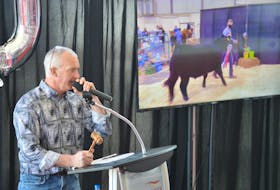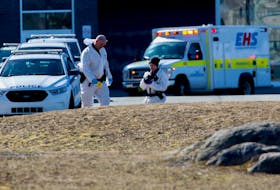Canada has been losing and saving species for a long time. Since European settlement, over 100 species have been lost here. These include plants and animals that are extinct and extirpated and species that are considered historic (no one has seen them in Canada for a long time).
The causes of species loss in Canada have varied through time, and include over-hunting, pollution, invasive species, habitat loss and climate change. These mirror the threats to species around the world. Canada has made significant progress in reducing some of these threats, and helping some species to recover.
Of all the threats to species and of all the factors endangering Canada’s wildlife, the challenge to our generation is stopping habitat loss.
Now, you might have thought climate change is our biggest challenge. But to save species, to prevent the further loss of Canada’s wildlife, we need to save habitat. There is no opportunity for species’ recovery if their habitat is lost. Changes in hunting regulations couldn’t have saved pronghorns if there wasn’t any habitat left. And solving climate change won’t protect species if, in our race to reduce carbon emissions, their habitat disappears.
Canada's commitment to protect 30 per cent of our land and inland waters by 2030 will help us meet an important conservation milestone, but many of these new protected areas and conservation lands will be in our northlands. This is critical for woodland caribou and wolverines, but many of Canada’s most endangered species live in the southern areas of Canada where most of the land is privately owned. This is also a landscape that is under the most immediate threat. In many regions, we have a one-time opportunity for our generation to protect critical habitats for our most endangered plants and animals.
One of the most important roles of the Nature Conservancy of Canada (NCC) and other land trusts is to work with private landowners to protect habitat for species that are at risk of being lost from Canada. NCC now protects habitat for over 225 species that have been assessed as endangered, threatened or special concern by the Committee on the Status of Endangered Wildlife in Canada (COSEWIC). This growing number reflects both the increasing number of species assessed as at risk by COSEWIC and NCC’s continued focus on protecting lands that provide habitat for our most endangered species.
Over the last few years, with support from the Government of Canada’s Natural Heritage Conservation Program, NCC has documented over 20 new species of endangered wildlife on our properties. Some of the species new that we help to protect include:
Evening grosbeak (special concern)
This coniferous forest songbird has been declining throughout most of its range. Threats to the evening grosbeak include loss of mature and old-growth forests. This bird was assessed as special concern by COSEWIC in 2016. At that time, NCC was already protecting nesting and stopover habitat across Canada, including Southwest Nova Natural Area in Nova Scotia.
Maritime ringlet (endangered)
The entire range of this small butterfly is restricted to coastal marshes in northern New Brunswick and the southern coast of the Gaspé Peninsula in Quebec. NCC documented this globally rare and nationally endemic butterfly in 2016 on a property in the Southern Gulf of the St. Lawrence.
Van Brunt’s Jacob’s ladder (threatened)
This globally rare wildflower was recently discovered on an NCC property in Quebec’s Eastern Townships. Van Brunt’s Jacob’s ladder is also in Charlotte County, New Brunswick, is rare throughout its range in northeastern Northern America and is threatened by habitat loss.
Habitat is the lynchpin of wildlife conservation. There are important successes in recovery and discovery that we need to share. But most importantly, we need to do more conservation and we need to do it faster. No one else can save Canadian wildlife except Canadians.
Dan Kraus is senior conservation biologist with the Nature Conservancy of Canada.








